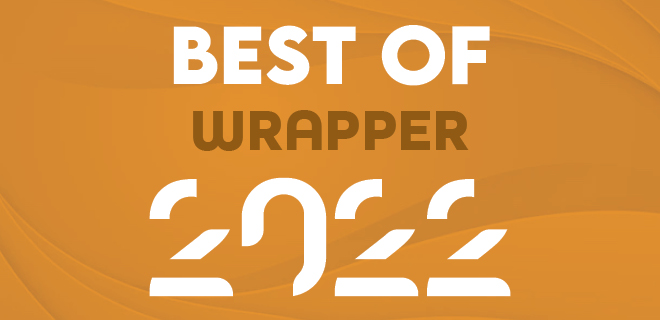
Each week AdMonsters sends out the Wrapper–a series dedicated to analyzing a curation of ad tech news from around the world. We thought this was important because any snippet of ad tech news influences the entire ecosystem.
For example, Microsoft recently announced the creation of a data boundary in the EU for consumers that use Microsoft cloud services. Digital media gave publishers access to global audiences. Consequently, the development affects publishers and advertisers outside of Europe.
With Wrapper, we connect the dots between developing news stories and well-established ad tech practices.
Here’s a look back at the top Wrappers of 2022.
Are We in the Midst of an Ad Recession?
If any question made the ad tech world stop and think, this one is a great contender.
The ad spend slowdown created a line of fire that no one escaped. Big tech companies like Meta, Twitter, and Snapchat saw low quarterly results. Even Alphabet, Google’s parent company, experienced its lowest results in two years. The industry wondered if the walled gardens weren’t safe, how would smaller publishers fare?
Based on the Q2 losses, the industry concluded an ad recession was nigh. It forced advertisers to be more frugal to ensure that they did not waste money..
Other headlines featured in this newsletter: Is New York Times Ad Sales Decline a Bad Omen for Digital Media?; YouTube’s Slow Revenue Growth Is Cause for Concern; “The Feedback Loop”
Recession where? Ad Spend to Skyrocket in 2022
For the past two years, consecutively, Group M predicted the global ad industry to see a surplus of growth in 2022, despite inflation and recession worries.
A mid-year forecast released by the WPP agency anticipates an 8.4% increase in global ad revenue, excluding U.S. political advertising. The results were optimistic, especially compared to the sentiments spouted by the rest of the industry.
“Recession should not be the base-case expectation for how the economy will evolve,” said Brian Wieser, global president, business intelligence for GroupM. It’s “less growth than we might have forecasted a few months ago, but not recession. Deceleration, not decline.”
Group M asserts that overtime correlations have weakened between economic activity and advertising, but marketers are being cautious. They are slowing down the rate they increased their media budgets and fewer new marketers emerged this year.
Other headlines featured in the newsletter: Potential Netflix and Roku Acquisition; Streaming Services Ad Rates
Could the Journalism Competition and Preservation Act (JCPA) save local news?
Inspired by the Australian government, House and Senate lawmakers attempted to pass an updated version of the JCPA. It was a direct attack against the infamous triopoly, one they did not take lightly.
Senator Amy Klobuchar brought the bill to the Senate floor a year prior, and the triopoly responded with threats such as restricting their news features. The showdown was one for the history books, but big tech came out on top as Congress announced that the JCPA would not go into effect.
Other headlines featured in the newsletter: Looming Recession Reduces Ad Spend, but Podcasts Rise Above; IAB Tech Lab’s Ads.txt Updates
P&G Bets Big On (Group) Black
In June 2021, Group Black launched to “dramatically transform the face of media ownership and investment.” They set out to assemble a collective of independent Black publishers with the ability and capital to meet advertisers’ needs.
In the first quarter of the year, Group Black received their most significant financial investment after Procter & Gamble donated a nine-figure sum. The investment started a multi-year deal and involved mediums such as linear, OTT, digital audio, and print channels.
P&G’s investment was a giant leap forward for Black publishers but also for often neglected marginalized audiences.
“It’s hard to reach niche audiences at scale,” says Lashawnda Goffin, CEO at Colossus SSP. “And that could be because of their lack of resources or know-how when it comes to the programmatic space.”
Other headlines featured in the newsletter: The EU’s DMA is Busting Open Big Tech; Instacart Platform Cashes In on First-Party Data
YouTube’s New Ad Options Include Frequency Capping
At YouTube Brandcast US, Allan Thygesen, President of Americas at Google, announced a new CTV management solution in DV 360 to enable advertisers to control frequency and manage waste.
“Frequency has always been the hard number, but it’s where the magic happens for brand building,” said Thygesen.
With the program, marketers set a weekly frequency goal to optimize the number of times viewers see their ads per week across in-stream formats. The early results for the frequency campaigns were positive and showcased that advertisers can prevent over-delivery and waste, stopping unnecessary ad spend.
Other headlines featured in the newsletter: Maybe Everyone Shouldn’t Launch an Ad Network; Meta’s Big L; RTB’s Big Data Breach; New Media Company to Vet Ad Tech Vendors
Ad Spend Down, It’s Not All Doom and Gloom
Ad spend slowdown was the talk of the town in 2022, and the upcoming recession caught even the walled gardens in the quicksand of revenue loss.
Publishers and advertisers bet on holiday sales to mitigate the downturn, but most companies reported a Q3 downward dip in ad spend, with sharper declines projected for Q4.
But the industry is not all doom and gloom. There are bright spots in the industry for publishers to diversify their revenue:
- Retail media: QoQ growth sits at 3% for retail media, and their YoY growth boasts an impressive 45% growth rate.
- Podcasting: The medium broke expectations for Q3, boasting 3% industry growth, and 1,878 news brands turned to podcasts as a new venture.